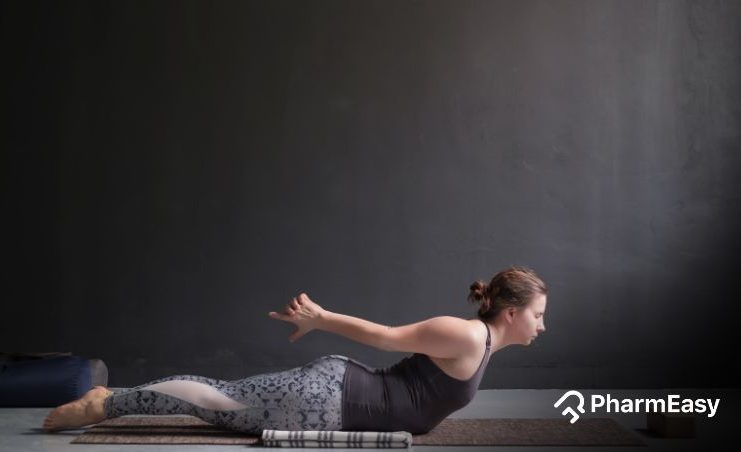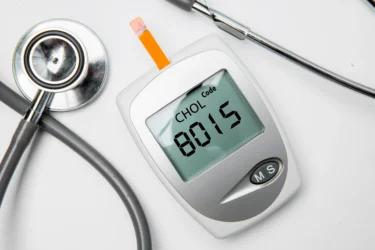Benefits of Sarpasana (Snake Pose) and How to Do it By Dr. Himani Bisht
By Dr. Himani Bisht +2 more

Get,

to manage your symptom
Get your,


4 Cr+ families
benefitted

OTP sent to 9988776655



You’ve successfully subscribed to receive
doctor-approved tips on
Whatsapp

Get ready to feel your best.

Hi There,
Download the PharmEasy App now!!


Register to Avail the Offer
Send OTPBy continuing, you agree with our Privacy Policy and Terms and Conditions

Hi There,
Sign up on PharmEasy now!!
Trusted by 4 crore+ families

OTP sent to 9988776655



You have unlocked 25% off on medicines




Code: NU25
By Dr. Himani Bisht +2 more
Table of Contents
Yoga, an invaluable gift from ancient India, embodies the unification of mind-body; thought and action, fulfillment and restraint; and is considered a holistic approach to human health and well-being. Yoga is about practicing asanas and discovering a sense of oneness within ourselves, the world and nature1. Sarpasana is the most versatile of all yoga asanas. Sarpasana, also known as the snake pose or the snake asana, is a yoga pose that is said to have many benefits.

If you are searching for an easy yoga pose that can help you improve your overall health and well-being, look no further than Sarpasana! Please keep reading to learn more about the benefits of this pose and how to do it.
Sarpasana is a backbend in the prone position. “Sarpa” in Sanskrit means snake and “asana” means pose. In English, this asana is known as snake pose yoga. The Sritattvanidhi (treatise written in Karnataka), which was written in the 19th century, mentions this pose as “Sarpasana”, whereas in Iyengar yoga (a book written by the foremost yoga guru; B.K.S.Iyengar) this pose is referred to as Bhujangasana or the cobra pose2.
Sarpasana’s aligning of the spine allows prana (life-force energy) to flow through the chakras. As a result, these chakras are opened and balanced. Following chakras/body centers are opened and balanced :
The best time to practice Yogasanas is the “Brahmamuhurta”; a Sanskrit word that refers to the time two hours before and including sunrise. It is always advised to practice any asana on an empty stomach. Avoid performing any asana until three-four hours have lapsed after meals. One may perform Sarpasana in the following manner:
In my experience, regular practice of Sarpasana along with other yoga asanas may aid in rheumatoid arthritis. For the benefit of people, this drug-free, readily adaptable, easily accessible, reasonably priced expensive, side-effect-free, and more natural alternative therapy for the management of Amavata (rheumatoid arthritis).
Dr. Rajeev Singh, BAMS
Some benefits of yoga Sarpasana are as follows:

Pushpika et al. conducted a study13 in 2010 to assess the efficacy of yoga intervention in individuals with lower back pain. The yogic treatment plan included several asanas like Sarpasana. At the end of the study, it was found that lower back pain can be managed in the majority of cases with the help of Yogasanas like Sarpasana. However, further studies are needed to support these results. Consequently, it is recommended to consult a doctor for proper treatment; do not rely on this asana alone. Additionally, one must perform this asana under the supervision of a qualified trainer5.

Diabetes is characterized by an increase in glucose in the blood. Malhotra et al. conducted a study12 in 2003 on Type II diabetic individuals to assess the effect of yoga intervention consisting of various asanas like Sarpasana on Type II Diabetes mellitus. The 40-day practice of asanas like Sarpasana showed a decrease in fasting and post-prandial blood glucose. Therefore, yogic postures like Sarpasana might help improve glycemic control. However, if you have an abnormal sugar level, you should consult a doctor and not rely on this asana alone to treat diabetes. Additionally, it is recommended to practice this asana under the guidance of a professional trainer6.

Musculoskeletal disorders (MSDs) are complex syndromes ranging from acute to chronic pain, disability or impaired physical function. Yogasanas like Sarpasana move the spine and the lower body through the complete range of motion and might help improve muscle activity. Thus, it may provide symptomatic relief from MSDs. However, limited studies are known in this area. So, in case you have any muscle disorders, it is recommended to consult a doctor and not rely on this asana alone. Additionally, it is advised to perform this asana under the guidance of a qualified trainer7.

Martale et al. conducted a study8 in 2014 to assess the effects of Pranayama on physiology. The result on biochemical variables revealed a reduction trend in the values of triglycerides, cholesterol and LDL (Low-density lipoprotein). The results of this study sustained the fact that Yogasanas like Sarpasana may help improve the lipid profile. However, it is recommended to consult a doctor if you have an abnormal lipid profile. Sarpasana should not be considered a substitute for modern medicine and should be performed under the supervision of a qualified trainer8.

Verma et al. conducted a study9 in 2017 to assess the effect of yoga practices on micronutrient absorption in 66 urban school children. The yoga intervention included several supine pose and prone pose asanas including Sarpasana. 12-weeks of yoga intervention showed improvement in micronutrient absorption. Therefore, asanas like Sarpasana may improve micronutrient absorption. However, more studies should be conducted to support these claims. It is recommended to not consider this asana as an alternative to modern medicine. Additionally, it is advised to perform this asana under a qualified trainer9.

Yoga practice may help develop the mind and body; however, it is still not an alternative to modern medicine. Therefore, you must not rely on Yoga alone to treat any condition. Instead, please consult a qualified doctor who will be able to assess your condition correctly and advise accordingly. Moreover, it is necessary to practice and learn Yoga under the supervision of a trained yoga teacher to avoid any injuries.
From my knowledge, regular practice of Sarpasana may help to tone the abdomen and lessen the size of a bulging belly. It is believed to aid in the weight loss journey11.
Dr. Siddharth Gupta, B.A.M.S, M.D (Ayu)
Few conditions where Sarpasana is contraindicated are:
Also Read: Benefits of Pranam Asana (Prayer Pose) and How to Do it By Dr. Himani Bisht
Sarpasana is a backbend in a prone position. “Sarpa” in Sanskrit means snake, and “asana” means pose. In English, this asana is known as snake pose yoga. The Sritattvanidhi (treatise written in Karnataka), which was written in the 19th century, mentions this pose as “Sarpasana”, whereas in Iyengar yoga (a book written by the foremost yoga guru; B.K.S.Iyengar) this pose is referred to as Bhujangasana or the cobra pose. Practising Sarpasana may provide several benefits, which include improvement of diabetes, asthma, muscular flexibility, and lipid profile. Additionally, this asana may help promote appetite, relieve constipation, strengthen legs and shoulders and improve flexibility.
Sarpasana is known as the snake pose in yoga. “Sarpa” in Sanskrit means snake and “asana” means pose. In English, this translates to snake pose yoga.
Sarpasana may provide several benefits, which include improvement of diabetes, asthma, muscular flexibility and lipid profile. Additionally, this asana may help promote appetite, relieve constipation, strengthen legs and shoulders and improve flexibility.
Lie on your stomach with your legs straight, and your feet joined together. Place your chin on the floor. Next, interlock the fingers and place your hands on your buttocks. Push your hands back and try to raise your arms as much as possible. Imagine someone is pulling your arms from behind. Hold this position as long as it is comfortable. Next, slowly return to the initial position and relax your body. This completes one round of Sarpasana. Repeat and practice up to five rounds3.
People having cardiac disorders, vertebral and disc disorders, hernia, and ulcers should abstain from performing Sarpasana3.
No, Sarpasana is not a part of surya namaskar.
1. 21 June INTERNATIONAL DAY OF YOGA INTERNATIONAL DAY OF YOGA Common Yoga Protocol, Ministry of Ayurveda, Yoga & Naturopathy, Unani, Siddha and Homoeopathy (AYUSH) [Internet] 4th Revised Edition, May 2019. [Cited: 2022 Nov 06] Available from: https://mea.gov.in/images/pdf/common-yoga-protocol-english.pdf
2. N.E.Sjoman. Sarpasana. The Yoga tradition of the Mysore palace. Abhinav publications.1999;16,21,71,72. Available at: https://terebess.hu/english/Yoga-Tradition-of-the-Mysore-Palace.pdf
3. Swami Satyananda Saraswati. Asana Prayanama Mudra Bandha. Yoga Publication trust Bihar: India.1996;201-203. Available at: https://www.yogkulam.org/books/Asana.pdf
4. Swami Satyananda Saraswati. Kundalini Tantra. Awakening the chakras. Pg.53.Available at: https://www.yogkulam.org/books/Kundalini%20Tantra%20SwamiSatyananda%20Saraswati-.pdf
5. Pushpika et al. Clinical evaluation of selected Yogic procedures in individuals with low back pain.Ayujournal. April,2010. DOI:10.4103/0974-8520.72409. Available at: https://www.researchgate.net/publication/51844141_Clinical_evaluation_of_selected_Yogic_procedures_in_individuals_with_low_back_pain
6. Malhotra. V, Singh. S, Tandon OP, Sharma SB. (2005). The beneficial effect of yoga in diabetes. Nepal medical college Journal, 7(2), 145-47 Available at: https://pubmed.ncbi.nlm.nih.gov/16519085/
7.Mullerpatan RP, Agarwal BM, Shetty TV. Exploration of Muscle Activity Using Surface Electromyography While Performing Surya Namaskar. Int J Yoga. 2020 May-Aug;13(2):137-143. doi: 10.4103/ijoy.IJOY_72_19. Epub 2020 May 1. PMID: 32669768; PMCID: PMC7336940. Available at: https://www.ncbi.nlm.nih.gov/pmc/articles/PMC7336940/
8. Martale at al. The Effect of Pranayama on Physiological Aspects. Entire Research, Vol.- 6, Issue-II. 2014;66-70. Available at: https://www.ghrws.com/Entire%20Research/E.%20R.%202014/Volume-6,%20Issue-II,%20April%202014.pdf
9. Verma A, Shete S, Kulkarni D, Bhogal RS. Effect of yoga practices on micronutrient absorption in urban residential school children. J Phys Ther Sci. 2017 Jul;29(7):1254-1258. doi: 10.1589/jpts.29.1254. Epub 2017 Jul 15. PMID: 28744059; PMCID: PMC5509603. Available at: https://www.ncbi.nlm.nih.gov/pmc/articles/PMC5509603/
10. Pal Surbhi, Role of yoga therapy (Asana & Pranayama) in the Management of Menopausal Syndrome. Sangyaharan Shodh: International Peer Reviwed: Aug. 2022, Vol. 25, No.2/ ISSN 2278-8166. Available from: https://www.researchgate.net/publication/377724687_Role_of_yoga_therapy_Asana_Pranayama_in_the_Management_of_Menopausal_Syndrome
11. Joshi S (Deole), Deole YS, Vyas GH, Dash SC. Management of overweight and obesity through specific yogic procedures. AYU (An International Quarterly Journal of Research in Ayurveda). 2009 Oct–Dec;30(4):425–435 [cited 2025 Dec 20]. Available from: https://www.researchgate.net/profile/Yogesh-Deole/publication/265026464_Management_of_Overweight_and_Obesity_through_specific_Yogic_procedures/links/54f8124b0cf210398e940ed7/Management-of-Overweight-and-Obesity-through-specific-Yogic-procedures.pdf
12. Malhotra V, Singh S, Tandon OP, Madhu SV, Prasad A, Sharma SB. Effect of yoga asanas on nerve conduction in type 2 diabetes. Indian J Physiol Pharmacol. 2002 Jul;46(3):298–306. PMID:12613392. Available from: https://pubmed.ncbi.nlm.nih.gov/12613392/
13. Attanayake AMP, Somarathna KIWK, Vyas GH, Dash SC. Clinical evaluation of selected yogic procedures in individuals with low back pain. Ayu. 2010 Apr;31(2):245–250. doi:10.4103/0974-8520.72409. PMID:22131719; PMCID:PMC3215373. Avaiable from: https://pubmed.ncbi.nlm.nih.gov/22131719/
Disclaimer: The information provided here is for educational/awareness purposes only and is not intended to be a substitute for medical treatment by a healthcare professional and should not be relied upon to diagnose or treat any medical condition. The reader should consult a registered medical practitioner to determine the appropriateness of the information and before consuming any medication. PharmEasy does not provide any guarantee or warranty (express or implied) regarding the accuracy, adequacy, completeness, legality, reliability or usefulness of the information; and disclaims any liability arising thereof.
Links and product recommendations in the information provided here are advertisements of third-party products available on the website. PharmEasy does not make any representation on the accuracy or suitability of such products/services. Advertisements do not influence the editorial decisions or content. The information in this blog is subject to change without notice. The authors and administrators reserve the right to modify, add, or remove content without notification. It is your responsibility to review this disclaimer regularly for any changes.
Comments

Leave your comment...
You may also like
Comments